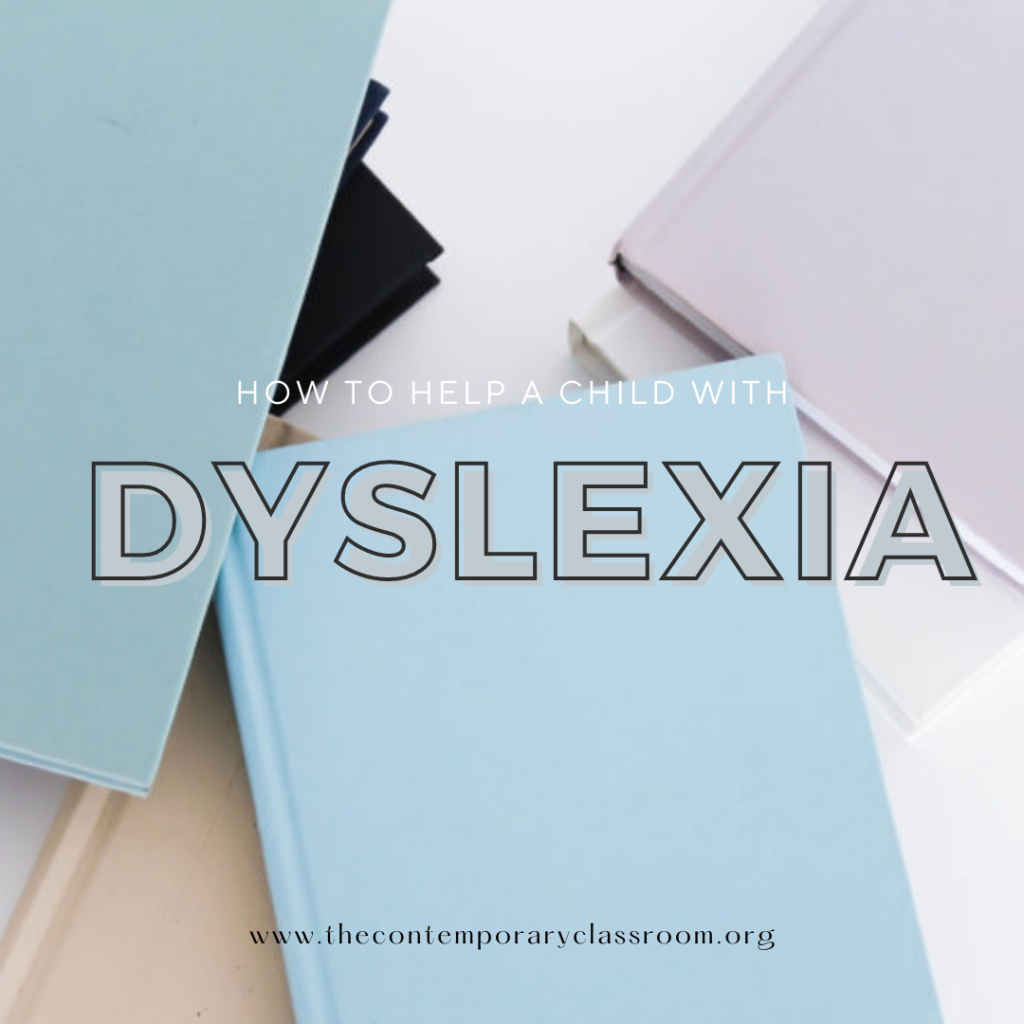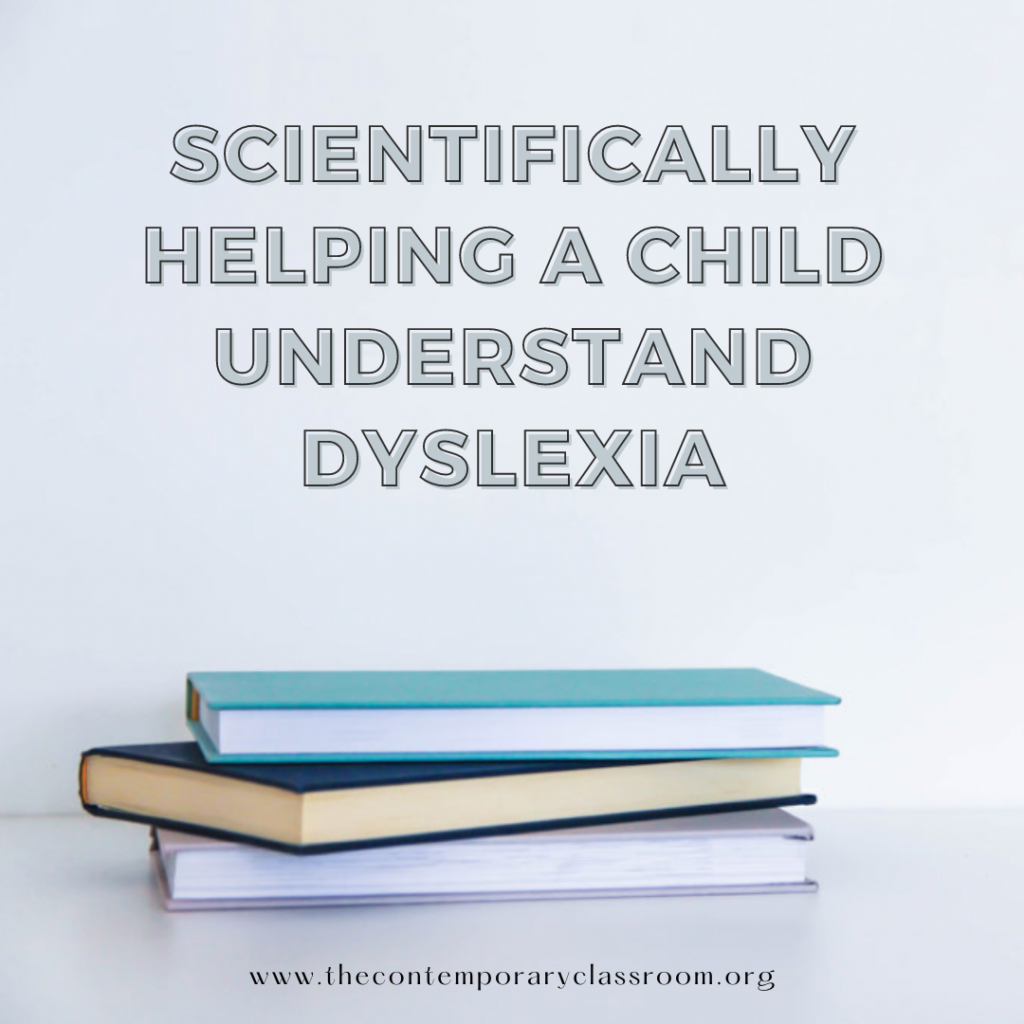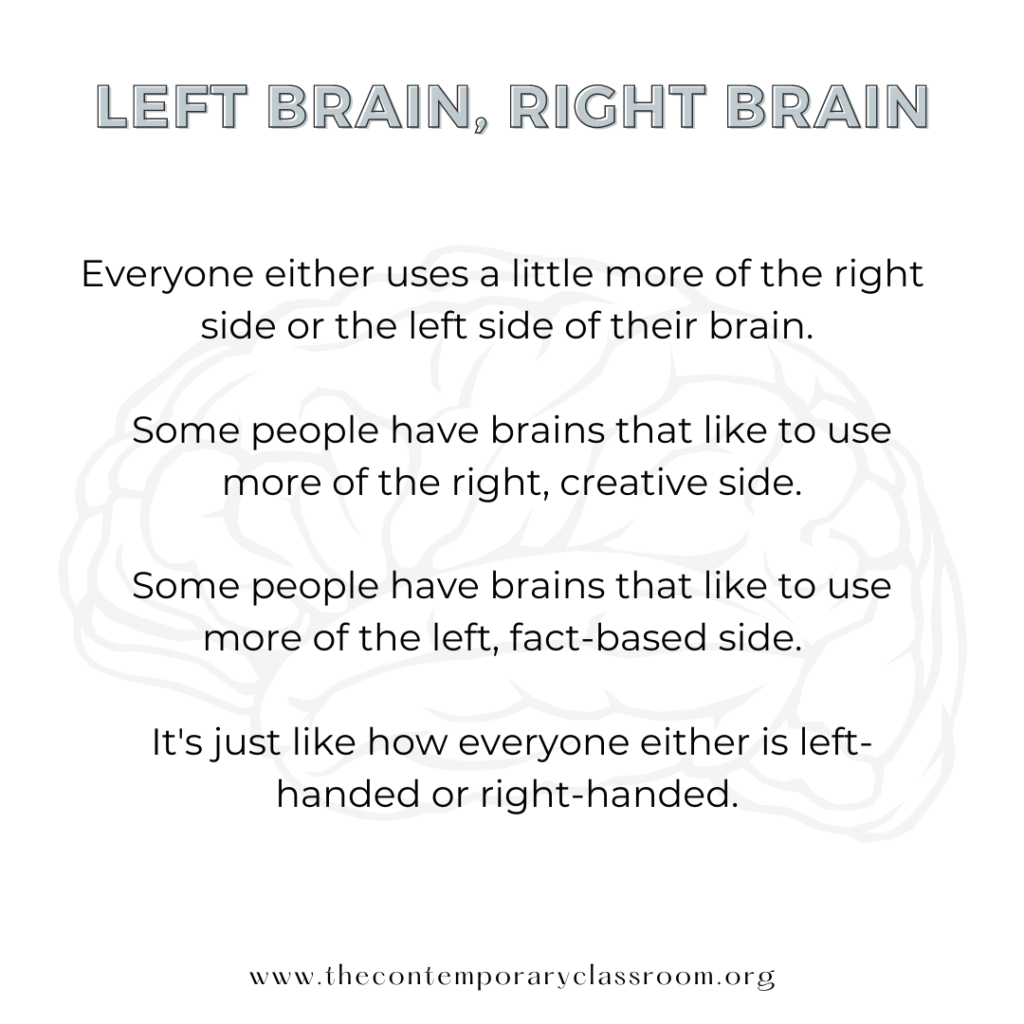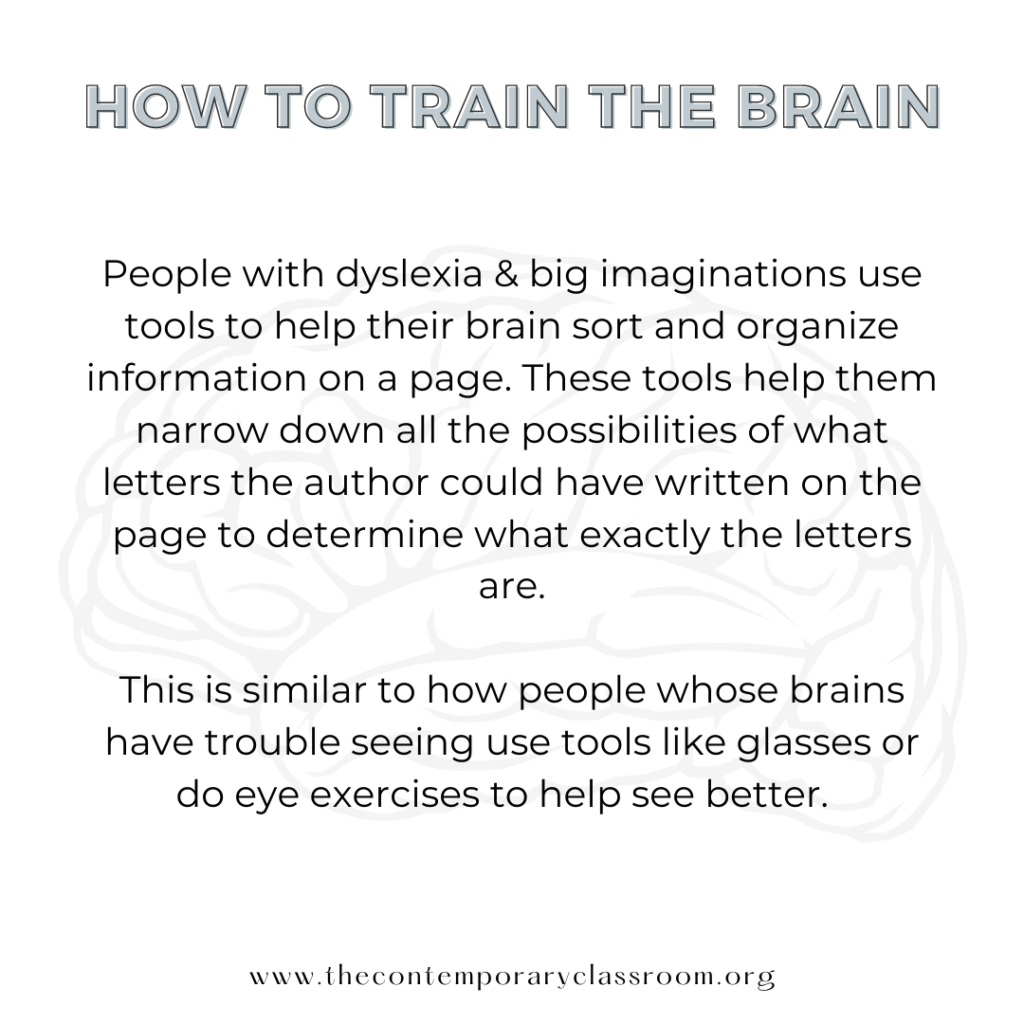an article from
The Contemporary Classroom's
professional journal
dyslexia
What Is
DYSLEXIA?
Dyslexia is a general term that involves difficulty in learning to read or interpret words, letters, and other symbols.
It does NOT affect general intelligence.

how many people have dyslexia?
In many ways, having dyslexia is pretty normal.
20% of people have dyslexia.
In a school with 5 classes in each grade, that’s 1 whole class of kids per grade level who have dyslexia!
Having dyslexia is even more common than being left-handed!

when to identify dyslexia
Dyslexia can be identified at any time. First Grade is an ideal year to identify dylsexia. First Grade is ideal because then those students will be provided tools early in their academic career. Early intervention is very powerful in helping students with dyslexia.
how to identify dyslexia
Signs of dyslexia include: more slowly progressing in learning to read, difficulty learning letter sounds & names, difficulty implementing letter sounds while reading, difficulty implementing letter combinations when reading, loosing track of what’s being read while reading, getting tired of reading easily, having higher than average math abilities and lower than average reading abilities, still reversing letters like b & d in 2nd grade – prior to 2nd grade it is still very common.
While these are common signs of dyslexia, reading is a developmental skill. It’s similar to learning to walk – it happens at everyone’s own pace. Formal testing can identify if the cause is truly dyslexia or not. Formal testing can be done privately or through most schools.
Formal testing through schools can have a long wait time due to processing. If you think your child may have dyslexia, you can speed up the processing by requesting testing be done. Parent requests typically speed the process up by about 6 weeks. Otherwise, you have to wait for the teacher to progress monitor for 6 weeks after initial concerns are seen and then bring up the option of testing to you.
why identify dyslexia

Sometimes, parents do not want to test their struggling reader for dyslexia because they are concerned about what a possible diagnosis might mean in terms of how their child views themself & how others will view their child.
This concern often comes from misunderstandings about what dyslexia is. Truly understanding what dyslexia is helps address this concern.
Just like anything that deals with your body, it’s good to know what is going on. Here are some benefits of identifying dyslexia:
– children understand why reading seems to be challenging for them. This can boost their self-perception because it gives them a frame of reference and understanding.
While it is best practice to directly teach all children how language works, by identifying dyslexia, it ensures that those children are given this instruction & given the tools that can help them be successful in school.
For example, those with dyslexia often read more slowly. By formally identifying dyslexia, schools are legally required to provide dyslexic students with accommodations such as more time on tests.
what is it like to have dyslexia?
While dyslexia looks different depending on the individual and does not always mean letters are jumping around on the page rapidly. However, this simulation can help people without dyslexia experience what it can be like. We suggest timing yourself reading the passage with the simulation on. Then, time yourself reading the passage with the simulation off. This can help people who do not have dyslexia understand why accommodations such as extended time to take tests and other tools can be helpful.
how to help a child understand what it means to have dyslexia






14 ways to help children with dyslexia

– Normalize that everyone has things they struggle with and work to improve on. Share your own difficulties. Keep in mind that when something is hard, typically people just don’t want to do it. Pressure from home & school gives struggling readers anxiety. Sharing your struggles helps take the pressure off and makes their struggle less lonely.

– Using bookmarks to track while reading. Also, using a bookmark to cover up all the letters in a word except for the letter you are trying to sound out helps the brain sort & organize what it is reading.
– For Orton-Gillingham based phonics instruction, PRIDE and Take Flight are 2 programs.
– At home practice with words: rhyming games, ISpy a certain letter games, etc.

– Celebrate every success with a “good job” or high five. Every one: reading a single word correctly, increasing a reading level, knowing sounds that letter combinations make, when they self-correct an error. Praise when reading should be given constantly.
– ideas for goals: learning lowercase letter sounds; lowercase letter names; capital letter sounds; capital letter names; what the vowels are; sounds that the letter combinations make; being able to read for 5 minutes uninterrupted, 10 minutes, 15 minutes, 20 minutes; their first chapter book; moving up levels in their leveled books. Track their growth until goal is reached. This allows them to see that they’re capable of reaching a goal & that they can be successful.
normalizing dyslexia
Sometimes, kids can get frustrated by the fact that they struggle with reading. Normalizing the concept that everyone has something they have to work on really helps with this.





additional facts about people with dyslexia




